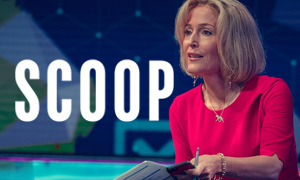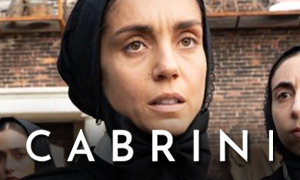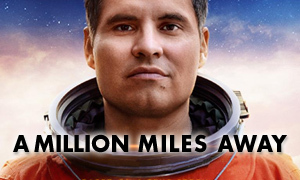BlackBerry (2023)
Jay Baruchel
Born: April 9, 1982
Birthplace:
Ottawa, Ontario, Canada
Mike Lazaridis
Born: March 14, 1961
Birthplace: Istanbul, Turkey
Bio: RIM Co-Founder and Co-CEO
Matt Johnson
Born: October 5, 1985
Birthplace:
Toronto, Ontario, Canada
Doug Fregin
Born: 1960
Birthplace: Canada
Bio: Research in Motion Co-Founder
Glenn Howerton
Born: April 13, 1976
Birthplace:
Japan
Jim Balsillie
Born: February 3, 1961
Birthplace: Seaforth, Ontario, Canada
Bio: Co-CEO of Research in Motion
Cary Elwes
Born: October 26, 1962
Birthplace:
London, England, UK
Carl Yankowski
Born: July 22, 1948
Birthplace: Butler, Pennsylvania, USA
Bio: CEO of Palm, Inc.
When was Research in Motion founded?
The true story reveals that the company that made the BlackBerry smartphone, Research in Motion (RIM), was founded by childhood friends Mike Lazaridis and Doug Fregin in 1984. They were both engineering students at the time, Mike at the University of Waterloo and Doug at the University of Windsor. One of RIM's early devices was a bulky digital advertising device called the Budgie, which never took off. For a time, they made circuit boards for factory equipment and computerized digital display boards for General Motors Corp. RIM won Oscar and Emmy technical awards for their automated barcode readers for film-editing machines. Eventually, RIM focused on the development of connectivity technology, including modems and pagers. -Losing the Signal
Where did the real-life story of the BlackBerry take place?
Like in the movie, the rise and fall of the Canadian company Research in Motion unfolded in Waterloo, Ontario.
Did Doug Fregin wear headbands?
No. As elaborated on in the next question, a BlackBerry fact-check reveals that Matt Johnson's character in the movie bears no resemblance to the real Doug Fregin, who never wore tank tops and headbands to the office.
Does BlackBerry portray Doug Fregin accurately?
No. Director and co-star Matt Johnson, who portrays Doug Fregin in the film, said that he is a "true cipher," pointing out that Fregin has never sat down for a recorded interview. Instead of drawing from what little he knew about the real Fregin, Johnson instead portrayed Fregin as a "kind of mascot figure who is tying the culture of the office together."
Johnson claims that his portrayal of Fregin is partially based on Matthias Wandel, another of RIM's early employees (The Associated Press). Wandel worked at the company from 1993 to 2007. Johnson had discussed RIM's history with Wandel, who even offered diaries that he kept as they developed the BlackBerry smartphone. Still, this didn't stop Wandel from releasing a YouTube video where he points out the BlackBerry movie's inaccuracies, at least the ones he observed in the film's trailer. This includes the movie's wildly inaccurate depiction of Doug Fregin.
"First thought [upon seeing the trailer], this guy was just a fictional character," Wandel said, until he then heard him being referred to by the name Doug. "This guy, both in appearance, and speech, and temperament, bears NO resemblance to the actual Doug Fregin. This guy, as far as I'm concerned, is a fictional character." Unlike what Johnson stated, Wandel apparently saw no resemblance to himself in the character either.
Was movie night a custom during the early days at Research in Motion?
In the film, Doug Fregin (Matt Johnson) is the organizer of movie nights at the RIM office. The walls of the office are also adorned with movie posters. The book that provided the foundation for the movie, Losing the Signal, doesn't mention movie nights at the office or movie posters, but it does state that movies were one of Mike Lazaridis' hobbies and that he eventually had an impressive home theater. It also mentions that Jim Balsillie was a fan of James Bond. According to director Matt Johnson, he drew inspiration from his own understanding of 1990s pop culture. In recreating Mike and Doug's journey in the film, he was also inspired by his own journey as a young filmmaker. It seems likely that movie nights are more a nod to Johnson's own love of film, as well as the playful atmosphere at the RIM offices in the early days, rather than something that actually happened in real life.
Had Jim Balsillie never seen Star Wars?
In researching the BlackBerry true story, we learned that this is an entirely fictional moment that was inserted in the film to separate the geeks from their potential new partner, who is depicted as an outsider in their world. Former RIM employee Matthias Wandel shook his head at the film's assertion that Jim Balsillie never saw Star Wars. "Jim not knowing about Star Wars, oh God. Jim is way more worldly than that," said Wandel in a YouTube video critiquing the film's trailer. "He would be much more familiar with pop culture than to not know about Star Wars. And that reference to Star Wars [in the movie], people didn't talk like that at RIM. It wasn't like that at all."
Is Jim Balsillie portrayed accurately in BlackBerry?
No. The real Jim Balsillie has seen the movie twice and said that Glenn Howerton's character is almost unrecognizable to him. In the movie, Balsillie is depicted as a foul-mouthed tyrant who throws temper tantrums and, at the same time, steers the company down the road to success, plowing through anything that gets in his way. "I'm aggressive. I'm competitive. I'm ambitious. I own that," said Balsillie, but the film exaggerates it to the point of satire, he noted. "When I first saw it, I was confused for about five minutes. And then I thought, 'OK, we're being roasted here.' ... They're taking an element of truth, who I am, and they're playing with it."
Another former RIM employee has commented on Balsillie's portrayal in the film. "This guy is much more portrayed the shark than he really was," says Matthias Wandel, who worked at RIM from 1993 to 2007. "He was much more likable than [Glenn Howerton's character]. Of course, being likable makes him much more effective at business, and he was good at that. ... He's being portrayed perhaps a bit too harshly." Wandel did note that Balsillie could unleash a verbal barrage if he felt insulted, "but for the most part, he was quite likable in terms of normal interactions." -Matthias Random Stuff YouTube
Of the three key BlackBerry players, Jim Balsillie is the only one who attended the premiere of the movie and sat for a private screening. Former RIM co-founder/co-CEO Mike Lazaridis and co-founder Doug Fregin did not to attend and have yet to see the film. "They're having a lark with us," said Balsillie of the filmmakers. "Lighten up, everybody. It's a movie." -The Canadian Press
Is RIM co-founder Mike Lazaridis depicted accurately in the BlackBerry movie?
"He doesn't really look like that," says former employee Matthias Wandel of Jay Baruchel's character. "He was much more roundish. He's of Greek origin, not at all like this guy." -Matthias Random Stuff
Did they go to a pitch meeting with a hastily-whipped-together BlackBerry demo device?
In analyzing the BlackBerry fact vs. fiction, we learned that the demo in the movie was indeed inspired by a real 1996 pitch meeting that they attended. However, the pre-BlackBerry email device that they demoed in real life was far more polished than the hastily-put-together device in the movie. "The device that was shown was an email device with a flip-top lid and QWERTY keyboard. It didn't remotely resemble [the device in the movie]," said former RIM employee Matthias Wandel. However, it is true that some of the employees pulled an all-nighter to get the device ready, and it did have some last-minute issues that needed to be fixed on the day of the presentation. The movie's version of the device and the actual demo device are displayed below.
Referring to the slapped-together device in the movie and its exposed wires, Wandel noted, "Mike Lazaridis wouldn't have been caught dead showing something like that, like, so unprofessional. Mike was very much about being professional. He was very much not the stereotype of the Silicon Valley startup, but that's not the story they want to portray. They want to sort of portray it like the exciting sort of startup thing from the late 1990s, like all these startups were supposed to be like. I don't know what they really were like because I wasn't part of one. I was just part of RIM, but I can tell you, RIM was not like that."
Despite the real device not resembling the pieced-together one in the movie, it's true that it was barely functional. "The product just barely worked," said Wandel. "Mike was very pleased that it did work for the demo, because we all knew it was very flakey, and the deal got made and it was great."
Wandel pointed out that unlike what the Jim Balsillie character states at the meeting in the movie, they weren't calling it by the name BlackBerry at that point. The name BlackBerry didn't get coined until a few years later. -Matthias Random Stuff YouTube
Were BlackBerry smartphones focused on email?
Yes. BlackBerrys were a business-centric phone that became wildly popular due to the small keyboard underneath the screen and its ability to handle email. "What RIM did with the BlackBerry, it integrated with the corporate email servers," noted former RIM engineer Matthias Wandel, "so if your company had a BlackBerry server connected to their email server, that would then go out through the Internet and then go over Mobitext and enter your BlackBerry, and it would seem like it was just part of your PC's inbox, in that if you sent from it, it was sent from your PC and it would be in your outbox. So to have a really good email integration, that was RIM's thing at the time." -Matthias Random Stuff YouTube
Despite the BlackBerry's keys being too small for your fingers, it was still better than typing characters by cycling through the letters assigned to each number on a cell phone's numeric keypad. In conjunction with email, RIM, the company behind the BlackBerry, focused largely on the security and connectivity requirements of its enterprise customers. The company's reluctance to shift its focus from this sector of the market would eventually contribute to its downfall.
When did the first BlackBerry come out?
For six years, Research in Motion (RIM) had sold two-way pagers. In exploring the BlackBerry true story, we discovered that the first RIM device to carry the name BlackBerry was the BlackBerry 850, released in 1999 as a two-way pager and email device. PC Magazine argues that the first true BlackBerry was the BlackBerry 957 (and its brother the 950), which introduced many of the user interface elements and icons that would last through the next decade. The 957, which was released in 2000, was equipped with the ability to access the Internet and functionality for push email. However, these devices weren't yet smartphones. That would come in 2002 with the release of the BlackBerry 5810, which still lacked an integrated microphone and required users to wear a headset. The following year saw the release of RIM's first true smartphone, the BlackBerry 7230. RIM thrived for the next six years and the BlackBerry brand dominated the smartphone market from 2005 to 2009.
Where did the name BlackBerry come from?
While researching the question, "How accurate is BlackBerry?" we learned that, originally, the executives at Research in Motion (RIM) were planning to call their new email device, which was not yet a phone, "PocketLink" or "MegaMail." Employees at a marketing agency called Lexicon came up with the name "BlackBerry," reasoning that the keyboard, with its little buttons, sort of resembled the skin of a fruit. Someone suggested "strawberry," but the name sounded too drawn out for a device that had instantaneous technology. Someone else suggested "blackberry," and the name eventually won out and was a hit with consumers. In the movie, the name is coined several years before it was in real life. -The New Yorker
Is the BlackBerry movie based on a book?
Yes. BlackBerry extrapolates its story from the 2015 book Losing the Signal: The Untold Story Behind the Extraordinary Rise and Spectacular Fall of BlackBerry by Jacquie McNish and Sean Silcoff. Unlike similar movies from 2023 that have told the origin stories of pivotal innovations, including Tetris and Air, BlackBerry doesn't end with its namesake innovation heading for the stratosphere. This is a rise-and-fall story, not a rise-and-rise one.
Director and co-star Matt Johnson, who portrays Doug Fregin, acknowledged that he took a number of creative liberties that deviate from the book. For instance, he shifted some timelines, based the company culture on his own perspective of the 1990s, and shaped the main characters by infusing them with "our own personalities and our own ideas." Johnson noted that the lawyers prohibited them from inserting anything in the movie that was "an outright fabrication." -Fortune
Did Palm CEO Carl Yankowski threaten a hostile takeover of RIM?
Yes. A BlackBerry fact-check confirms that Carl Yankowski spent months pursuing a takeover of Research in Motion. Mike Lazaridis and Jim Balsillie attended a dinner with him during which they felt like they were the main course. Yankowski, who is portrayed by The Princess Bride's Cary Elwes in the movie, would constantly try to one-up them as they discussed their personal pursuits and achievements. They began to make things up just to see if Yankowski would take the bait, and he did. Balsillie strung him along for months, keeping the takeover talks with his rival ambiguous. He never intended to agree to a merger unless he was given full executive control of the merged company, a stipulation he knew would never happen. He cut off discussions with Yankowski. -Losing the Signal
Was the BlackBerry dubbed the "CrackBerry" because it was so addictive?
Yes. In researching the question, "Is BlackBerry accurate?" it's true that people became obsessed with clicking away with their thumbs on the phone's tactile keyboard (even if it was too small for your fingers). It became so addictive that, for a period of time, it was nicknamed the "CrackBerry." BlackBerry controlled nearly half of the US cell phone market at its 2008 peak. It was selling over 50 million devices per year with a stock price of $230.
Today, the company that was once valued at $85 billion is worth $3 billion, and it controls 0% of the smartphone market. The company's stock price has fallen to the mid-single digits. -Fortune
Did Mike Lazaridis and Doug Fregin have a falling out?
During infighting reminiscent of the definitive movie of the genre, The Social Network, the company's success causes a fissure to form between Doug and Mike. The latter, portrayed by Jay Baruchel, gradually morphs from a playful nerd into a suit-clad company exec, while Doug (Matt Johnson) longs for the sandbox-style playfulness of the company's early days. While this change in Mike Lazaridis seems somewhat accurate, their rift in the film is mostly fiction.
Unlike what's seen in the movie, the real Doug Fregin would not have been disappointed if he wasn't included on a business trip with Mike Lazaridis and Jim Balsillie. "That just wasn't his thing," notes Matthias Wandel, a former RIM engineer. "Doug was somebody who liked to be in the background. He got things done. He did CAD work, just he was always doing things that needed to be done, always shying away from the glory, so Doug being sad about not going on some business trip [in the movie], bulls***. Doug would not have wanted to go on a business trip." -Matthias Random Stuff YouTube
Was Mike Lazaridis unwilling to believe that consumers would prefer a keyboard-free device like the iPhone?
This was one of the iPhone's numerous design improvements that allowed it to easily outshine the BlackBerry (the shape of the iPhone was another). In the movie, Mike (Jay Baruchel) is taken by surprise when Apple unveils the iphone, but he brushes it off as a silly toy that will never catch on. Despite Mike's genius, he's unable to recognize how groundbreaking it is to have an iPod, an Internet communicator, and a phone all in one device. Doug (Matt Johnson), on the other hand, recognizes that the company is in jeopardy.
This depiction of Mike Lazaridis contradicts the BlackBerry true story. As emphasized in the book Losing the Signal, it was actually Mike who brought the iPhone to Jim Balsillie's attention not long after Steve Jobs took to the stage and unveiled it to the world. Mike recognized it could revolutionize the industry. As a company, RIM mostly ignored the iPhone to focus on fulfilling the demand for BlackBerrys (and also because of the stock backdating scandal and their legal troubles). Several times, the book cites Mike as the one who saw the iPhone's potential and its threat to the BlackBerry, especially after the iPhone's release when Mike got to use one firsthand. It is true that Mike and others at RIM thought the iPhone would fail, but mainly due to it straining AT&T's network and its limited battery life.
Was Jim Balsillie's desire to buy a hockey team a distraction that contributed to the company's downfall?
No, at least not according to the real Jim Balsillie. While this was indeed a criticism of Balsillie at the time, he says that his desire to bring an NHL team to Hamilton, Ontario did not distract him from his obligations at the company. He told The Canadian Press that he only attended two meetings in three years that pertained to the purchase of the team. He pointed out that his training for long-course triathlons, which he participated in for ten years, took up far more time than his interest in buying a hockey team. "I trained two hours a day and spent 100 times more time on that than I did hockey. But nobody ever wrote an article on that ... When you are prosperous you have lots of different initiatives, everybody does," said Balsillie.
Did the launch of the iPhone in 2007 lead to the BlackBerry's demise?
Yes. My own experience with a BlackBerry is probably similar to the experience many people had when comparing the BlackBerry to the iPhone. Back in 2008, I was looking for a smartphone to replace the traditional cell phone I had through Verizon. I was aware of the BlackBerry and knew that it had been wildly popular. I figured since I could use it to access the Internet, it would be a good choice to use to monitor my websites. I had read about the iPhone, which had launched through AT&T the year prior, but I had never used one. So, I went to Verizon and brought home a BlackBerry, excited to have my first smartphone.
While I could see how the keyboard and the small screen beneath it might be good for handling email, the Internet looked miniature and it was slow. A few days later, I was at a birthday party and a friend showed me his new iPhone. I opened its Safari browser to access my websites. The touchscreen was effortless and the Internet looked amazing on the larger screen. I was hooked. It was a no-brainer. A day later, I went back to Verizon to return my BlackBerry. The sales associate told me that BlackBerry would be releasing a touchscreen smartphone similar to the iPhone a few months later called the BlackBerry Storm. I wasn't interested.
I went to AT&T and bought an iPhone and have never looked back (although I did switch back to Verizon as a carrier). The hastily-released BlackBerry Storm indeed arrived in stores that November, but it was glitchy and nothing like the iPhone. The BlackBerry Storm is regarded by some as the single biggest disaster in smartphone history (Losing the Signal).
BlackBerry's decline did not happen overnight. Even in 2010, three years after the release of the iPhone, they still held over 40% of the US market share and nearly 20% of the global market share. Yet, by 2013, they held less than 5% of the US market share (Harvard.edu). Their fall was due to several factors, some of which are highlighted in the movie, including the company's slow reactions to the changing market, misunderstanding the key ways a smartphone could be utilized, and poor execution. They focused too long on a device that catered to business people instead of the average fun-seeking consumer.
Did the BlackBerry servers go down in real life?
Yes. This occurred several times and it made the news when it happened.
Did Jim Balsillie become entangled in stock fraud?
No. During our exploration into the BlackBerry fact vs. fiction, we discovered that this is an exaggeration of what actually happened. These scenes are something that Jim Balsillie has taken issue with, pointing out that it never happened that way in real life. It's true that he was involved in a scandal where he and other executives were fined for stock option backdating, a tactic used to enrich the stock options held by employees. In 2009, RIM settled with regulators who described the executives as being negligent in managing the options backdating but pointed out that they did not commit fraud. The RIM executives were required to pay millions in fines.
"If you think growing a $20-billion company is designing illegal tax scams and raging f-bombs, there's nothing I can do to help you," Balsillie said of his character's exaggerated actions in the movie. -The Canadian Press
Did the creators of the BlackBerry become extremely wealthy despite their company's nosedive?
Yes. As seen in the BlackBerry movie, despite the company imploding, the co-founders of RIM (Research in Motion) walked away extremely wealthy. Doug Fregin was smart enough to see the writing on the wall as the collapse drew closer. He sold his stock at its peak in 2007 and became one of Canada's wealthiest men. He also resigned as vice president of operations. At one point in 2011, Mike Lazaridis had an estimated net worth of $1.9 billion. However, he held onto his shares and saw his net worth drop significantly as the company floundered. Lazaridis sold $26.5 million in shares in December 2013, lowering his stake in the company to less than 5%. He also stepped down as CEO.
Does BlackBerry still exist?
Yes. However, the answer to, "Does BlackBerry still make smartphones?" is no, they don't make smartphones anymore. Like in the movie, the story of BlackBerry is about someone who came up with a great idea, and after a significant amount of success, was eventually eclipsed by an even greater idea (the iPhone). In 2013, John S. Chen took over as CEO and Research in Motion (RIM) officially changed its name to BlackBerry Limited, piggybacking off the familiarity of the company's best-known product. Since 2013, BlackBerry has been focused on cybersecurity and software.
According to the company's website, BlackBerry is now "a software company focused on providing enabling technologies to ensure the safety and security of all the devices and systems businesses rely on. We are pioneers in cybersecurity, encrypted voice and digital communications, automotive safety, and innumerable connected and IoT systems and devices in fields such as medical, industrial, avionics and more—all with the common thread of intelligent security."
Overall, how accurate is BlackBerry?
The filmmakers have livened up the story of BlackBerry with the excitement that is often associated with Silicon Valley startups of the late 1990s. However, as noted in the movie, the real-life story of BlackBerry unfolded in Waterloo, Ontario, and as former employees have stated, it was nothing like a traditional Silicon Valley startup.
The movie's biggest inaccuracies lie in its depiction of the main characters, especially Doug Fregin, who bears almost no resemblance to the real-life RIM co-founder, both in terms of appearance and personality. Glenn Howerton's character, Jim Balsillie, is an over-the-top version of the real co-CEO, who was less of a pitbull and far more likable and worldly in real life (him being unfamiliar with Star Wars is fiction). In an interview with Den of Geek, director Matt Johnson said that he never spoke to the real Mike Lazaridis or Jim Balsillie, and in an interview with The Canadian Press, he indicated that he hadn't been in touch with the reclusive Doug Fregin either, the individual he portrays in the film.
There is some forgivable shifting of timelines, including the device being given the name BlackBerry much earlier than in real life. As a former employee pointed out, the movie also gets some technical details incorrect, but most people outside of the industry won't pick up on them. In the end, like other films in its genre, BlackBerry will leave you with a good understanding of the company's rise-and-fall story, even if the movie's version feels like it was injected with steroids.







